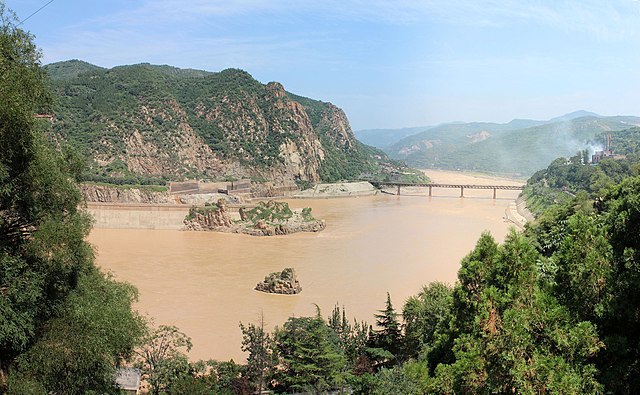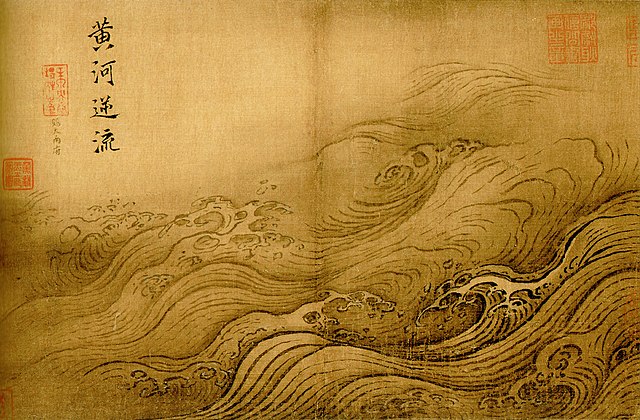Hangu Pass or Hanguguan is a pass separating the upper Yellow River and Wei valleys—the cradle of Chinese civilization and seat of its longtime capital Xi'an—from the fertile North China Plain. It lies on the south bank of the Yellow River just east of its eastward bend out of the Ordos Loop at Tong Pass in Shaanxi. It was the site of many battles during the Warring States and early imperial eras, when it was the chokepoint shielding Qin, Guanzhong, or Luoyang from outside attack. The term Hangu Pass refers to two locations: the Qin dynasty Hangu Pass in Hanguguan Town, Lingbao county, Sanmenxia city, Henan and secondly, the Han dynasty Hangu Pass in Xin’an county, Luoyang city, Henan. In 2014, the archeological site was recognized by UNESCO as part of the “Silk Roads: the Routes Network of Chang'an-Tianshan Corridor” World Heritage Site.
Hangu Pass archaeological site museum at Xin'an, Luoyang
The Yellow River is the second-longest river in China, after the Yangtze River, and the sixth-longest river system on Earth at the estimated length of 5,464 km (3,395 mi). Originating at an elevation above 15,000 feet in the Bayan Har Mountains, it empties into the Bohai Sea. The Yellow River basin was the birthplace of ancient Chinese civilization. Its yellow sediments are carried downstream from the Loess Plateau. The river experiences frequent devastating floods and course changes produced by the continual elevation of the river bed, sometimes above the level of its surrounding farm fields.
The Yellow River in Sanmenxia, Henan
The Yellow River Breaches its Course by Ma Yuan (1160–1225, Song dynasty). Flooding of the river has been the cause of millions of deaths.
Zoigê County, Sichuan.
Guide County, Qinghai in the Tibetan Plateau, upstream from the Loess Plateau.





